
How to Use MQ-138 SENSOR FORMALDEHYDE GAS V2: Examples, Pinouts, and Specs
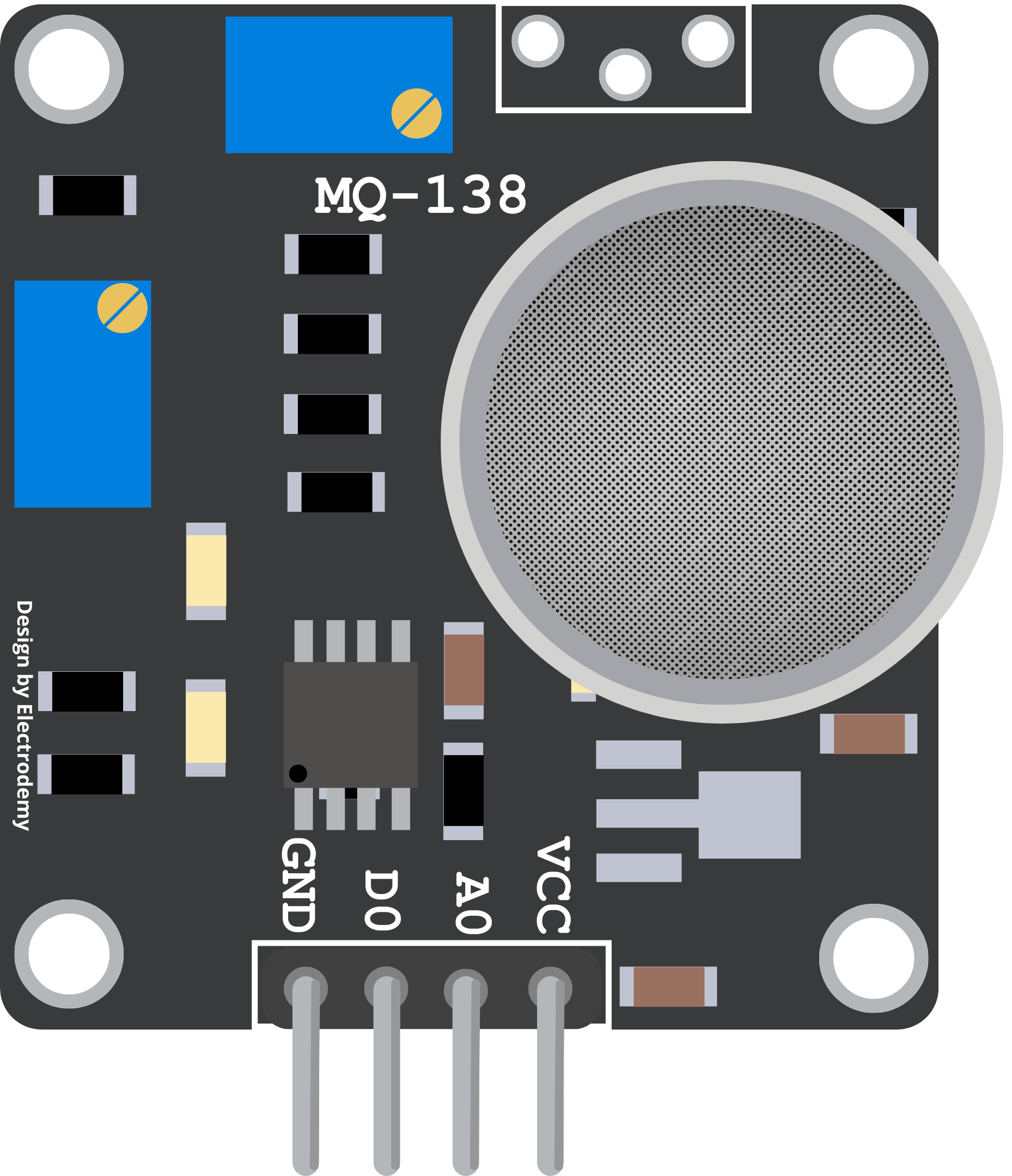
 Design with MQ-138 SENSOR FORMALDEHYDE GAS V2 in Cirkit Designer
Design with MQ-138 SENSOR FORMALDEHYDE GAS V2 in Cirkit DesignerIntroduction
The MQ-138 Sensor Formaldehyde Gas V2 is an electrochemical gas sensor designed for the detection of formaldehyde (HCHO) in the air. It is widely used in various applications such as air quality monitoring systems, environmental monitoring, and indoor air quality testing. The sensor is appreciated for its sensitivity and reliability in detecting even low levels of formaldehyde, which is a common volatile organic compound (VOC) with potential health risks.
Explore Projects Built with MQ-138 SENSOR FORMALDEHYDE GAS V2
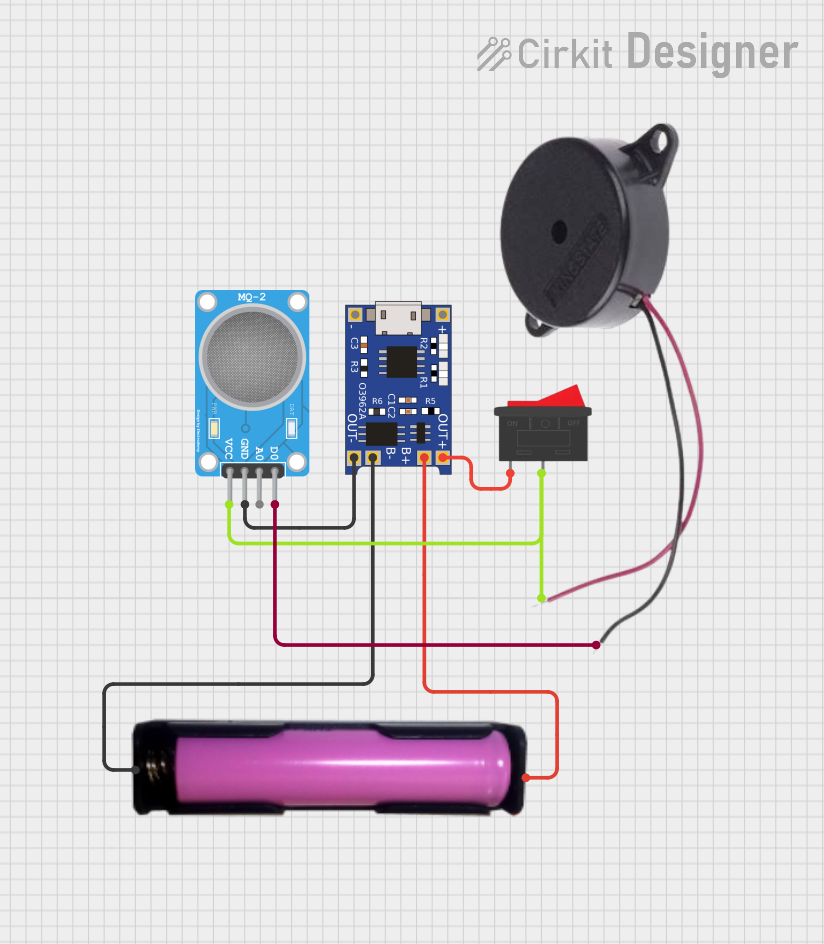
 Open Project in Cirkit Designer
Open Project in Cirkit Designer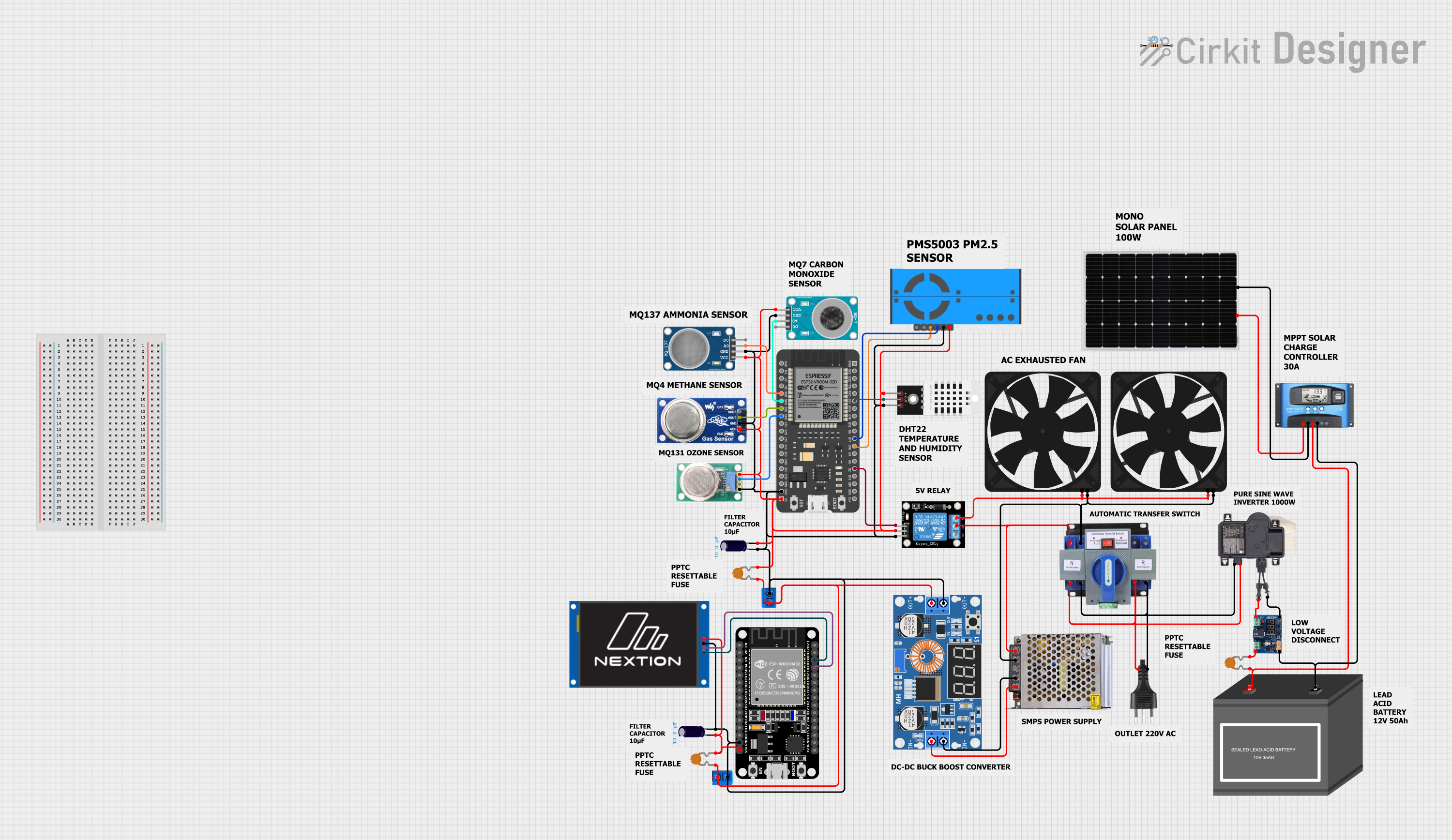
 Open Project in Cirkit Designer
Open Project in Cirkit Designer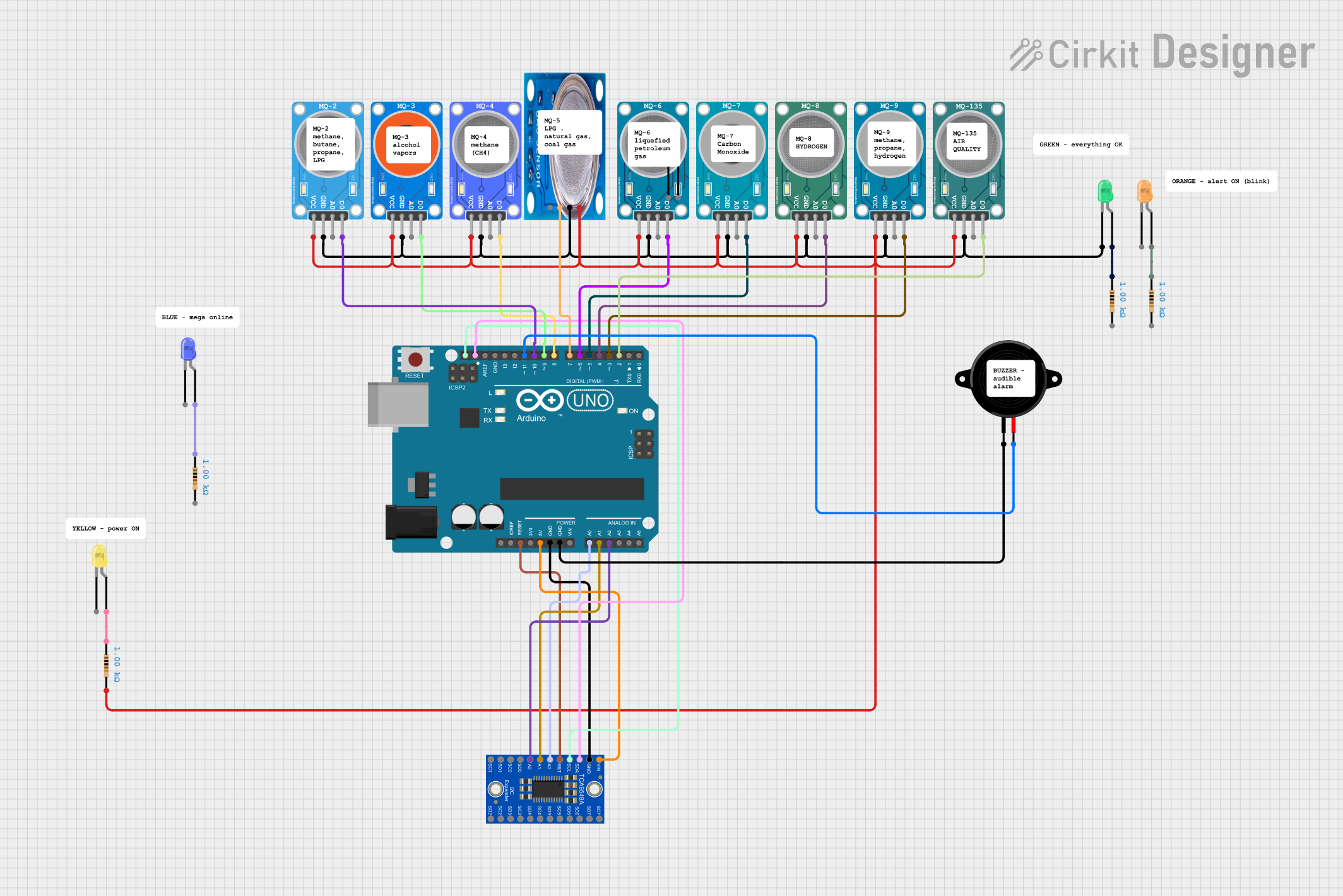
 Open Project in Cirkit Designer
Open Project in Cirkit Designer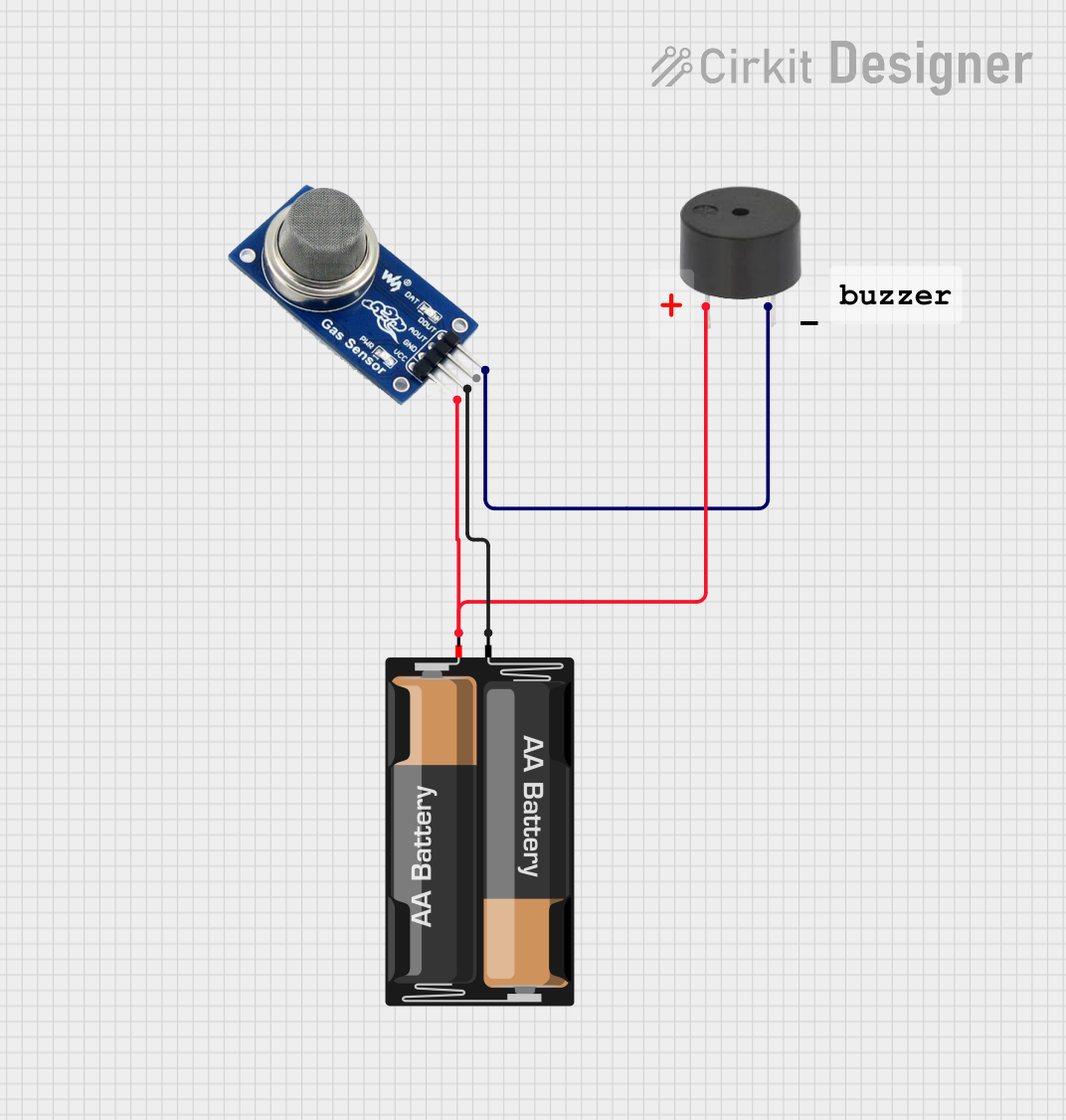
 Open Project in Cirkit Designer
Open Project in Cirkit DesignerExplore Projects Built with MQ-138 SENSOR FORMALDEHYDE GAS V2

 Open Project in Cirkit Designer
Open Project in Cirkit Designer
 Open Project in Cirkit Designer
Open Project in Cirkit Designer
 Open Project in Cirkit Designer
Open Project in Cirkit Designer
 Open Project in Cirkit Designer
Open Project in Cirkit DesignerTechnical Specifications
Key Technical Details
- Target Gas: Formaldehyde (HCHO)
- Operating Voltage: 5V DC
- Heater Voltage: 5V (typical)
- Load Resistance: Adjustable
- Heater Resistance: 33Ω (at room temperature)
- Heater Power Consumption: Approx. 800mW
- Detection Range: 0.05 - 10 ppm (parts per million)
- Preheat Duration: 20 minutes (minimum)
- Operating Temperature: -10°C to 50°C
- Operating Humidity: 95% RH or less (non-condensing)
Pin Configuration and Descriptions
| Pin Number | Description |
|---|---|
| 1 | H (Heater) |
| 2 | H (Heater) |
| 3 | A (Analog Output) |
| 4 | B (Analog Output) |
Usage Instructions
Integration with a Circuit
To use the MQ-138 sensor in a circuit, follow these steps:
- Connect the heater pins (H) to a 5V power supply.
- Connect one of the analog output pins (A or B) to the analog input of a microcontroller such as an Arduino.
- Use a variable resistor or a potentiometer to adjust the load resistance for calibrating the sensor's sensitivity.
- Allow the sensor to preheat for at least 20 minutes before taking readings.
Best Practices
- Ensure that the sensor is calibrated in an environment with a known concentration of formaldehyde for accurate readings.
- Avoid exposure to high concentrations of organic solvents, silicon compounds, and sulfur compounds as they may affect the sensor's performance.
- Keep the sensor away from direct sunlight and high humidity to prevent damage.
- Use the sensor within the recommended temperature and humidity ranges for optimal performance.
Example Code for Arduino UNO
// MQ-138 Formaldehyde Gas Sensor Example Code
const int MQ138AnalogPin = A0; // Analog input pin connected to MQ-138
void setup() {
Serial.begin(9600); // Initialize serial communication at 9600 baud rate
}
void loop() {
int sensorValue = analogRead(MQ138AnalogPin); // Read the sensor output
float concentration = sensorValue * (10.0 / 1023.0); // Convert to ppm (example)
Serial.print("Formaldehyde concentration: ");
Serial.print(concentration);
Serial.println(" ppm");
delay(1000); // Wait for 1 second before the next read
}
Note: The conversion from the sensor's analog output to ppm (parts per million) requires proper calibration. The example conversion formula provided is for illustration purposes only.
Troubleshooting and FAQs
Common Issues
- Inaccurate Readings: Ensure that the sensor has been properly calibrated. Also, check for any interference from other gases or environmental factors.
- Sensor Not Responding: Verify that the sensor is correctly powered and that the preheat time has been observed. Check the wiring for any loose connections.
Solutions and Tips
- Calibration: Perform calibration in a controlled environment with a known concentration of formaldehyde.
- Maintenance: Regularly check and clean the sensor's surface to prevent dust accumulation, which can affect readings.
- Interference: If other gases are present, consider using additional sensors to differentiate between the gases.
FAQs
Q: How often should the MQ-138 sensor be calibrated? A: Calibration frequency depends on usage, but it is generally recommended to calibrate the sensor every 6 months or whenever there is a significant change in the operating environment.
Q: Can the MQ-138 sensor detect other gases besides formaldehyde? A: While the sensor is designed for formaldehyde detection, it may show some sensitivity to other gases. It is important to calibrate the sensor specifically for formaldehyde for accurate measurements.
Q: What is the lifespan of the MQ-138 sensor? A: The typical lifespan of the sensor is about 2 years, depending on the operating conditions and exposure to target gases. Regular maintenance can help extend the sensor's life.
Q: Is the MQ-138 sensor suitable for outdoor use? A: The MQ-138 sensor is primarily designed for indoor use. If used outdoors, it should be protected from extreme weather conditions and direct sunlight to ensure accurate readings.